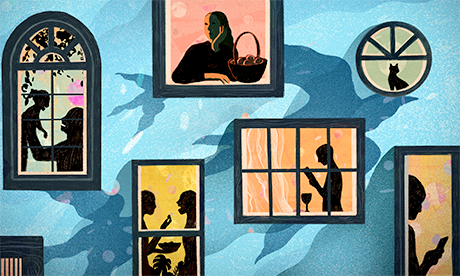The last time I “went to church,” there was no priest, no choir and no church building at all.
By Saturday afternoon, a fellow theology student and I had cobbled together an order of service complete with that Sunday’s readings, hymns and a reflection on the Gospel.
She and I texted a few of our friends and agreed to gather in her Cambridge apartment the following morning.
She presided over our Liturgy of the Word, and I preached.
We planned to continue gathering in our small group until public Masses resumed.
But the following week, restrictions grew stricter and half of us had moved away from the Boston area to shelter in place with family.
So, instead, we met on Zoom.
Our small community has been meeting online every Sunday for our Liturgies in Dispersion (a name borrowed from the Jesuit idea of communitas ad dispersionem).
Together, we finished Lent, observed the sacred Triduum and even held an Easter Vigil liturgy complete with sung Exsultet and all nine Scripture readings.
Each Sunday, there are a few new faces as folks share our Zoom link with their friends.
We have a dedicated cantor, rotating preachers and presiders, and even weekly “parish” announcements.
For me, this quarantine has not been marked primarily by frustration over losing the Mass. Instead, it has been marked by spiritual creativity and a renewed love for lay-led liturgy.
Apart from these Sunday gatherings, I have found myself nestling back into older habits of prayer.
In quarantine, my family and I have been praying the rosary every night.
With my two siblings and I living away from home before the pandemic, we have not had this routine of prayer in nearly a decade.
What once felt like a chore is now an opportunity to share our individual anxieties, fears and hopes with each other.
So when I recently read about prominent U.S. Catholics bragging about attending illicit underground Masses or petitioning bishops to prematurely reopen churches, I was confused.
I could understand the longing for community and sacrament, but I could not understand risking public health and the common good.
I began to realize that, for me, this quarantine has not been marked primarily by frustration over losing the Mass. Instead, it has been marked by spiritual creativity and a renewed love for lay-led liturgy.
Is It Real?
A friend who attended our Easter Vigil liturgy remarked afterward, “That was really nice, but was it real?” In many ways, he asked a valid and multifaceted question:
- Did it count for our Easter Sunday obligation?
- Can Catholic worship look so different from a normal Sunday Mass?
Given that most U.S. Catholic dioceses have dispensed Catholics from their weekly Sunday obligation, I feel unhampered by trying to make my Sunday worship “count.”
But as the theology behind the Sunday obligation teaches, Christian faith stirs up a desire to gather in community to celebrate every week.
Many parishes have tried to meet this need by offering live-streamed Masses. But for some, simply watching the Mass happen from their living rooms is not enough.
Christian worship has had to respond to different cultures and situations. In our current culture of social distancing, lay-led worship is just another iteration of liturgy’s adaptability.
Lay-led liturgy is not the same thing, but that doesn’t mean it isn’t real.
My community’s Sunday liturgies are different from a live-streamed Mass.
We do not have a priest, and we conclude each service with an act of spiritual communion instead of the Eucharist.
There is time for everyone to offer their own reflections on the Scripture readings and add their own intentions for the community to pray.
These liturgies strive to enact the Second Vatican Council’s ideal of full and active participation in worship.
I spoke to John Baldovin, S.J., about whether or not these lay-led liturgies were “real.”
Father Baldovin, a professor of liturgy at Boston College School of Theology and Ministry, laughed and said, “It’s not the same thing, but that doesn’t mean it isn’t real.”
From the early church, he explained, “the liturgy has always been adaptive and creative.”
Christian worship has had to respond to different cultures and situations. In our current culture of social distancing, lay-led worship is just another iteration of liturgy’s adaptability. Continue reading
Additional readingNews category: Analysis and Comment.




